Silent Sentinels
Sculptures of the sea
Welcome to another edition of Seascapes – a collection of incredible oceanic artwork and photography.
Let’s dive in 🎨
For centuries, artists have looked to the sea for inspiration, working to capture its might and mystery, its calm, and the many legendary voyages that have crossed it. Stories of life on and in the ocean have been reimagined countless times in oils, watercolours, sketches and stone. But for all of the art created about the ocean, there's something uniquely special about art in the ocean.
Here are eight underwater sculptures that call the ocean home. Battered by waves on the shore, standing sentinel on the ocean floor, or becoming an ever-evolving ecosystem – enjoy these hidden treasures that you’ve (probably) never heard of.
Christ of the Abyss
One of the world's most beautiful underwater sculptures stands tall in the Mediterranean Sea, off the Italian Riviera. The Christ of the Abyss, a 2.5-metre bronze statue of Jesus with his head and hands raised skyward in "peaceful benediction", has lived beneath the waves of San Fruttuoso bay since 1954. Sculpted by Guido Galletti, it was placed 17 metres deep as a memorial to Dario Gonzatti – the first Italian to use scuba gear – who died in the area, and to all those lost at sea. While several copies exist around the world, this original has spent nearly 70 years becoming one with the ocean.
Ocean Atlas
Ocean Atlas is the world's largest underwater sculpture, standing at an impressive 5.5 metres tall and weighing 60 tonnes. Created by Jason deCaires Taylor and installed off the western shores of Nassau, Bahamas, it depicts a young local girl bearing the weight of the ocean on her shoulders - a reference to the Greek Titan Atlas, who held up the heavens. Built with pH neutral materials, the sculpture serves a dual purpose: creating an artificial reef to draw marine life and tourists away from overstressed natural reefs, while making a statement about environmental responsibility. As our oceans face collapse from threats like pollution and overfishing, the burden of the Ocean Atlas is a reminder of the weight we're asking future generations to carry. The sculpture's installation even helped expose an ongoing environmental crisis – a long-standing oil leak from a nearby power station that had been quietly polluting these waters for years.
Neptuno de Melenara
On the southern coast of Gran Canaria rises Neptuno de Melenara. This 4-metre tall bronze masterpiece looms over the shore of Melenara Beach in Telde (looking eerily like a certain icy character of Westeros). Created in 1975 by Spanish sculptor Luis Arencibia, it sits on a mound of volcanic rock where the artist himself swam out to as a boy. Now his Neptune keeps watch over the water.
Nest
Another immersed piece from Ocean Atlas creator Jason deCaires Taylor, is 'Nest' lying off the coast of Gili Meno, a tiny Indonesian island between Bali and Lombok. Here, within swimming distance from shore, 48 life-size figures stand in an eternal circle - "an echo of the circle of life", as Taylor says. As 40% of the world's coral reefs face extinction, Nest (which is made from pH neutral cement and anchored to the seabed) is both a reminder of what we stand to lose but also a new home for marine life, slowly transforming into an artificial reef that the local community can depend on.
Baia
Off the northwest shore of the Gulf of Naples lies what remains of ancient Baia — a Roman resort town favoured by the elite of the empire for its opulence. Where emperors are said to have once strolled between luxurious villas and healing thermal spas, now only sea creatures take up residence. The same volcanic vents that drew Romans to build their retreats here ultimately led to the city's downfall, as the ground slowly sank beneath the waves. Now protected as an underwater archaeological park, these incredibly preserved ruins offer a glimpse into the lavish lifestyle of Roman nobility, with imperial bathhouses, grand marble halls and ornate statues standing as ghosts of a bygone era.
The Molinere Underwater Sculpture Park
The world's first underwater sculpture park lies in Molinere Bay, Grenada, where 75 extraordinary works (created primarily by artist and ecologist Jason deCaires Taylor) are spread across 800 square metres of seabed. Created in 2006 after Hurricane Ivan devastated the area, these pH neutral sculptures sit 5-8 metres deep, providing a new foundation for marine life to flourish. Among the most celebrated pieces is Vicissitudes — a ring of children from diverse backgrounds holding hands as they face the ocean currents, symbolising unity and resilience. Now listed as one of National Geographic's 25 Wonders of the World, this underwater garden shows how art and conservation can work in perfect harmony.
Amphitrite
15 metres beneath the waves off Grand Cayman Island sits Amphitrite. This bronze mermaid is a 2.7-metre tall sculpture created by Simon Morris in 2000 and is named after Poseidon's wife. Amphitrite was a Greek goddess who ruled as queen of the seas, and was the mother of Triton and of seals, dolphins, and other sea creatures. She has become a beloved destination for divers, as has her identical twin, The Emerald Princess who lives in Powell River, British Columbia.
MUSA (Museo Subacuático de Arte)
Living at various depths off the coast of Mexico, in the Cancún National Marine Park, lies an extraordinary underwater museum. MUSA features over 500 life-size sculptures by international and local artists, submerged beneath the waves across three galleries. Created from pH-neutral marine concrete, each piece is meticulously cleaned before installation to protect the surrounding ecosystem. What began as an innovative solution to save nearby coral reefs from diving pressure has evolved into something remarkable as it now provides a much-needed habitat for local marine life and fisheries. And it’s providing marine scientists with an opportunity to study marine life in closer detail and understand the impact of artificial reef systems on the greater ecosystem.
Here at Beached we are building a community that can put our brains and resources together to highlight and fund solutions to the problems facing the ocean and its inhabitants. I hope you’ll join our humble community and click subscribe for free or support our work by purchasing the paid subscription.
All Beached posts are free to read but if you can we ask you to support our work through a paid subscription. These directly support the work of Beached and allow us to engage in more conversations with experts in the field of marine conservation and spend more time researching a wider breadth of topics for the newsletters. Paid subscriptions allow us to dedicate more time and effort to creating a community and provide the space for stakeholders to come together, stay abreast of each other’s work and foster improved collaboration and coordination.
One day Beached hope to donate a large percentage of the revenue from paid subscriptions to marine conservation organisations and charities to support their work too. Working together, we can reverse the degradation of our oceans.
Amie 🐋



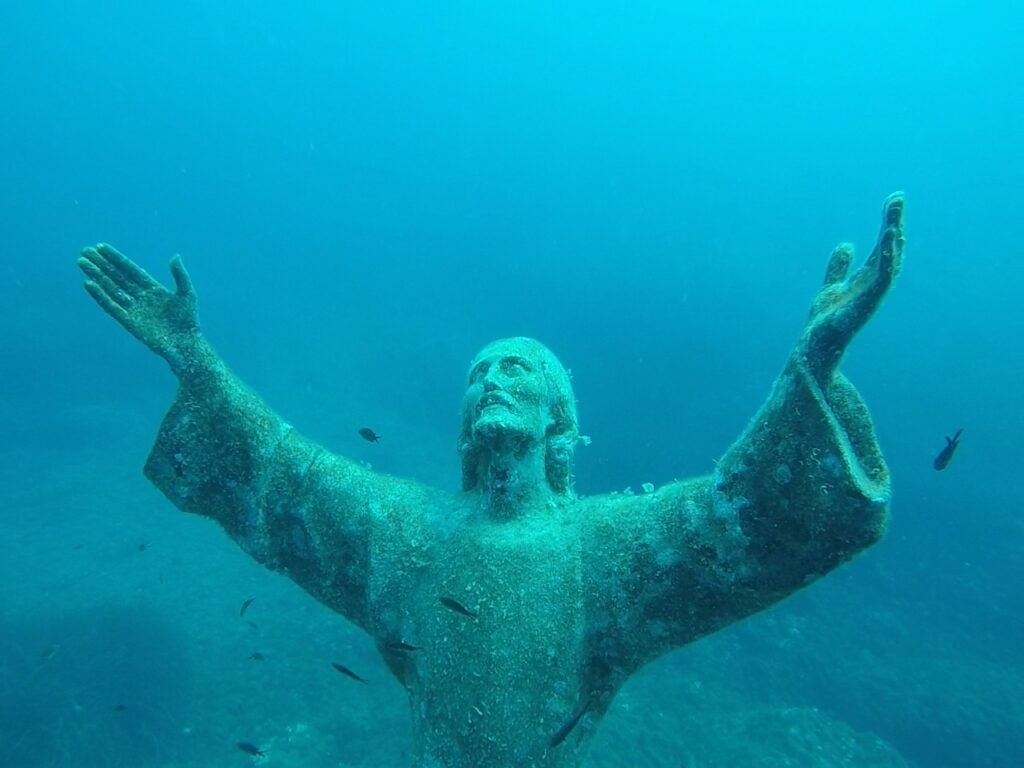

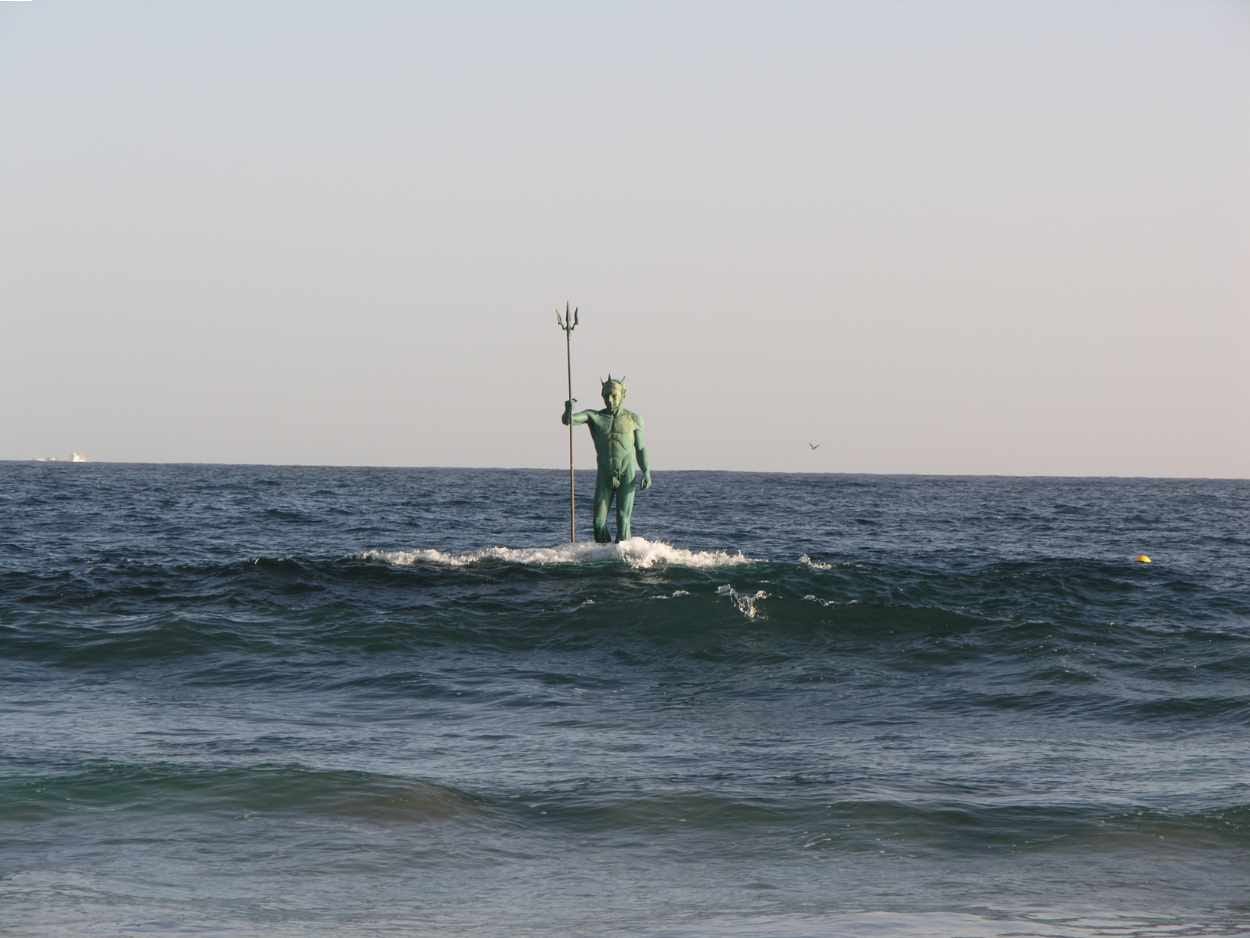
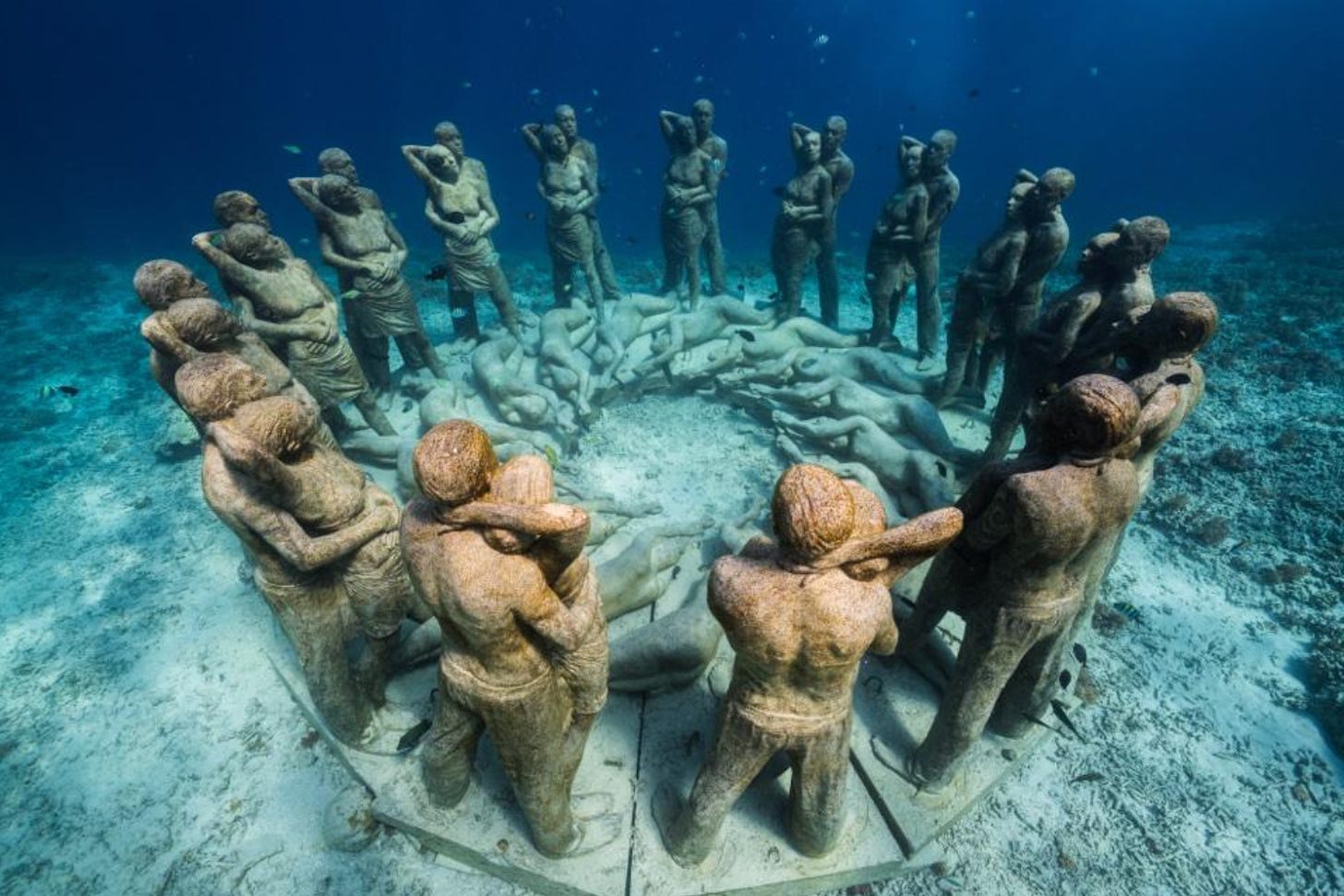


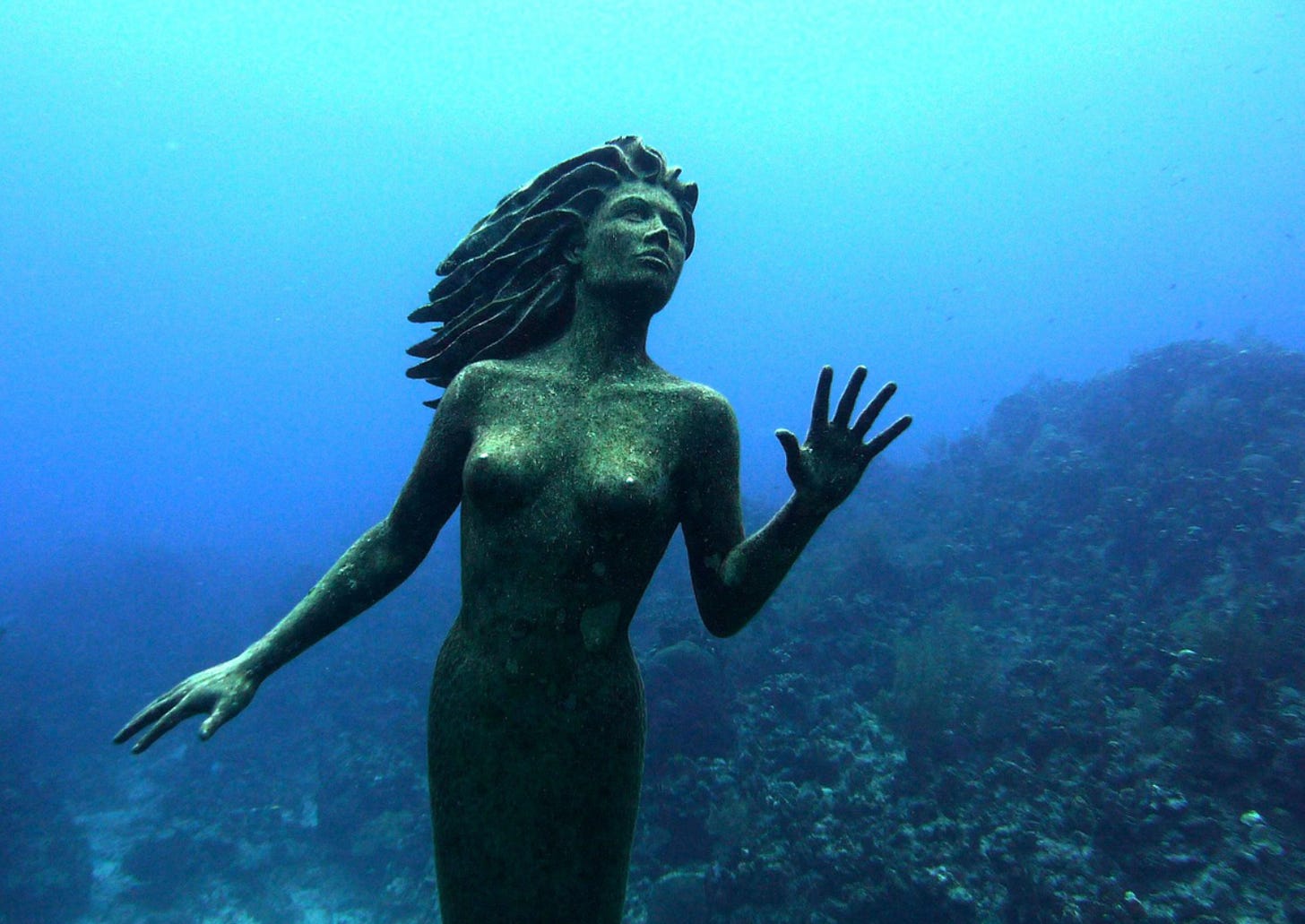
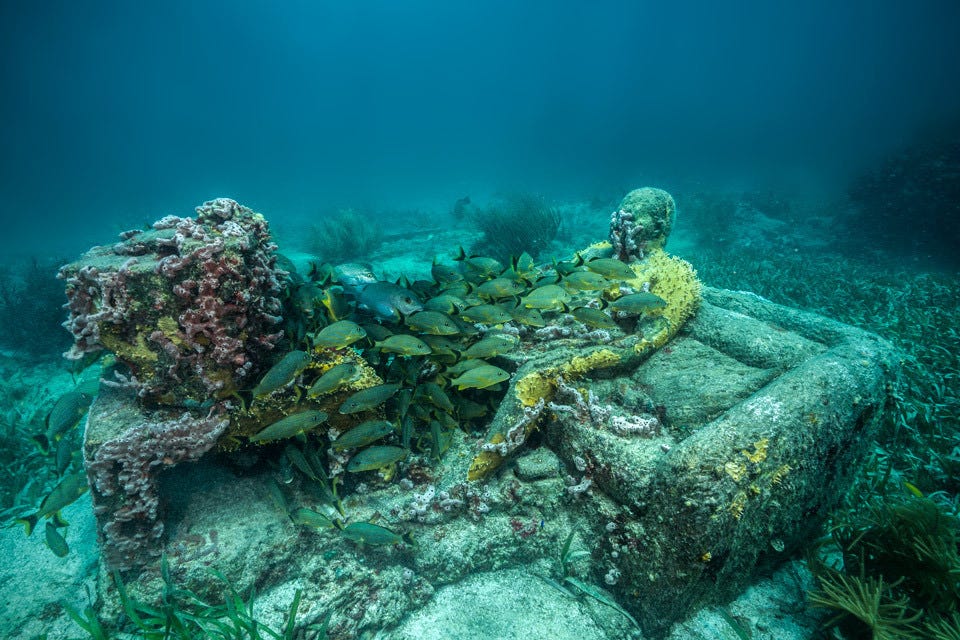
Lovely to have a nice list of these beauties. I only knew about a few.🪸
Incredibly cool piece Amie. I did not realize that the Christ of the Abyss statue in the Keys was a copy. You’ve definitely made a case for the silent, looming beauty of underwater sculptures. I get strange reactions at the airport when my backpack is only a computer, mask, and fins, but this 👆🏻is why. Thanks!